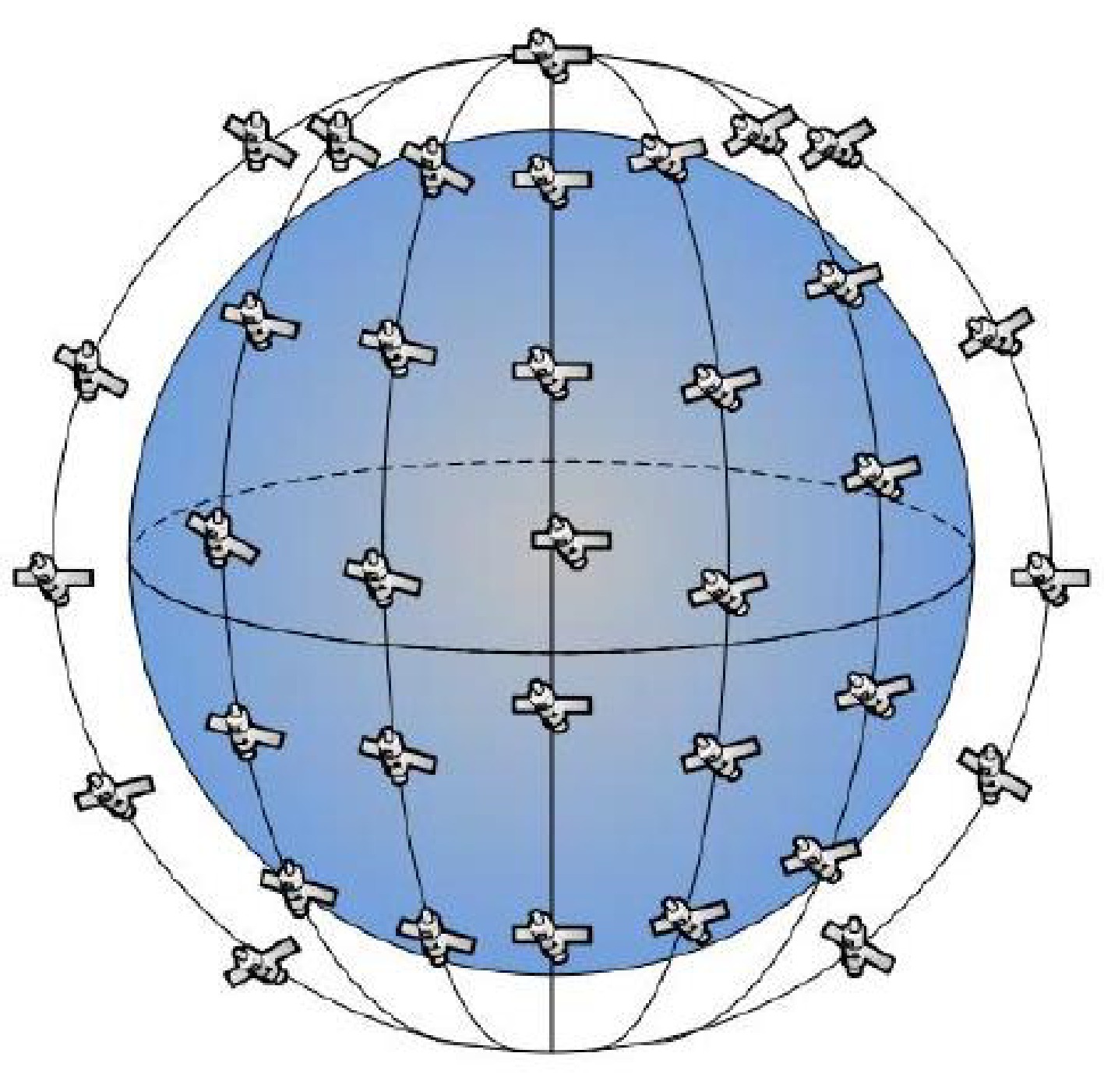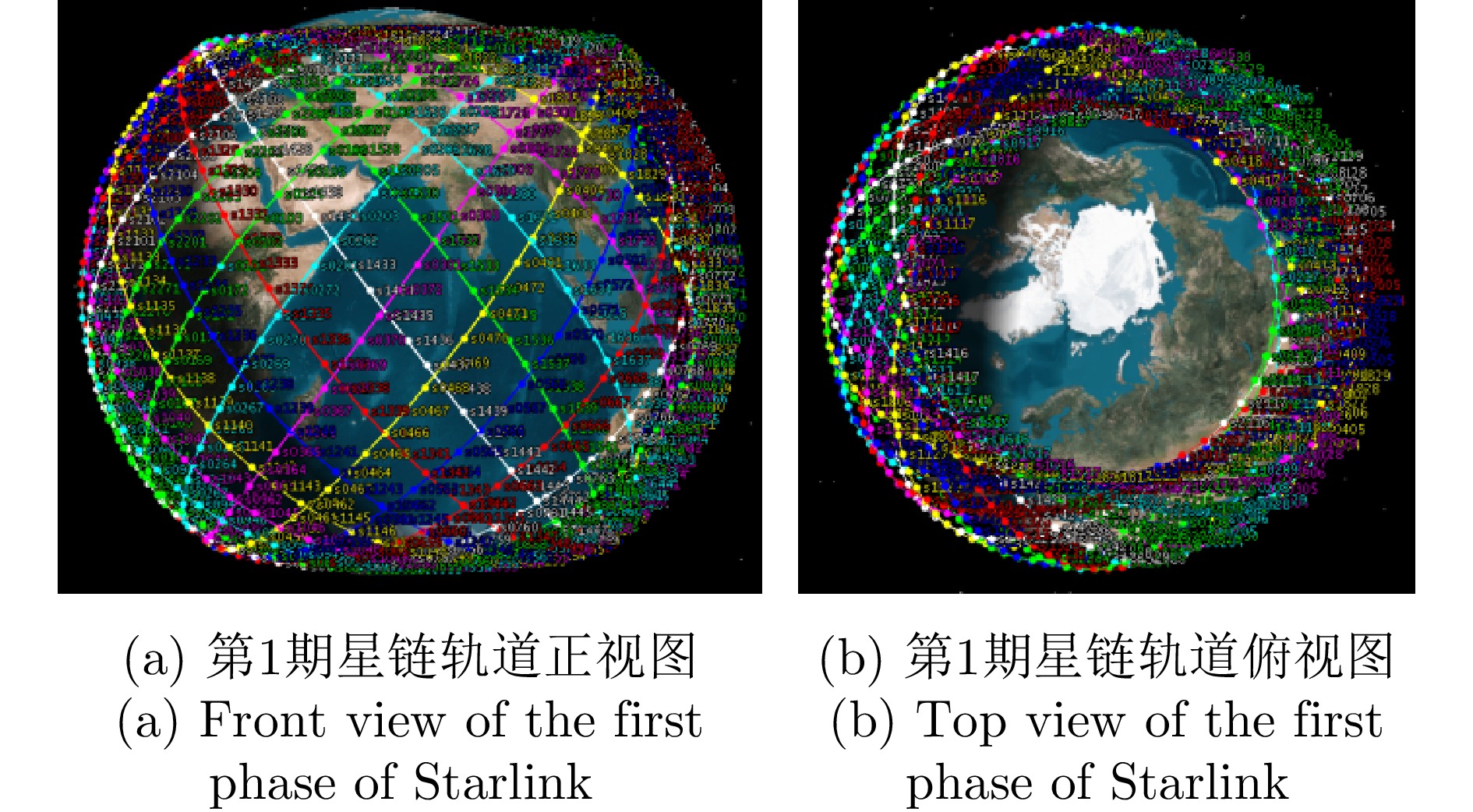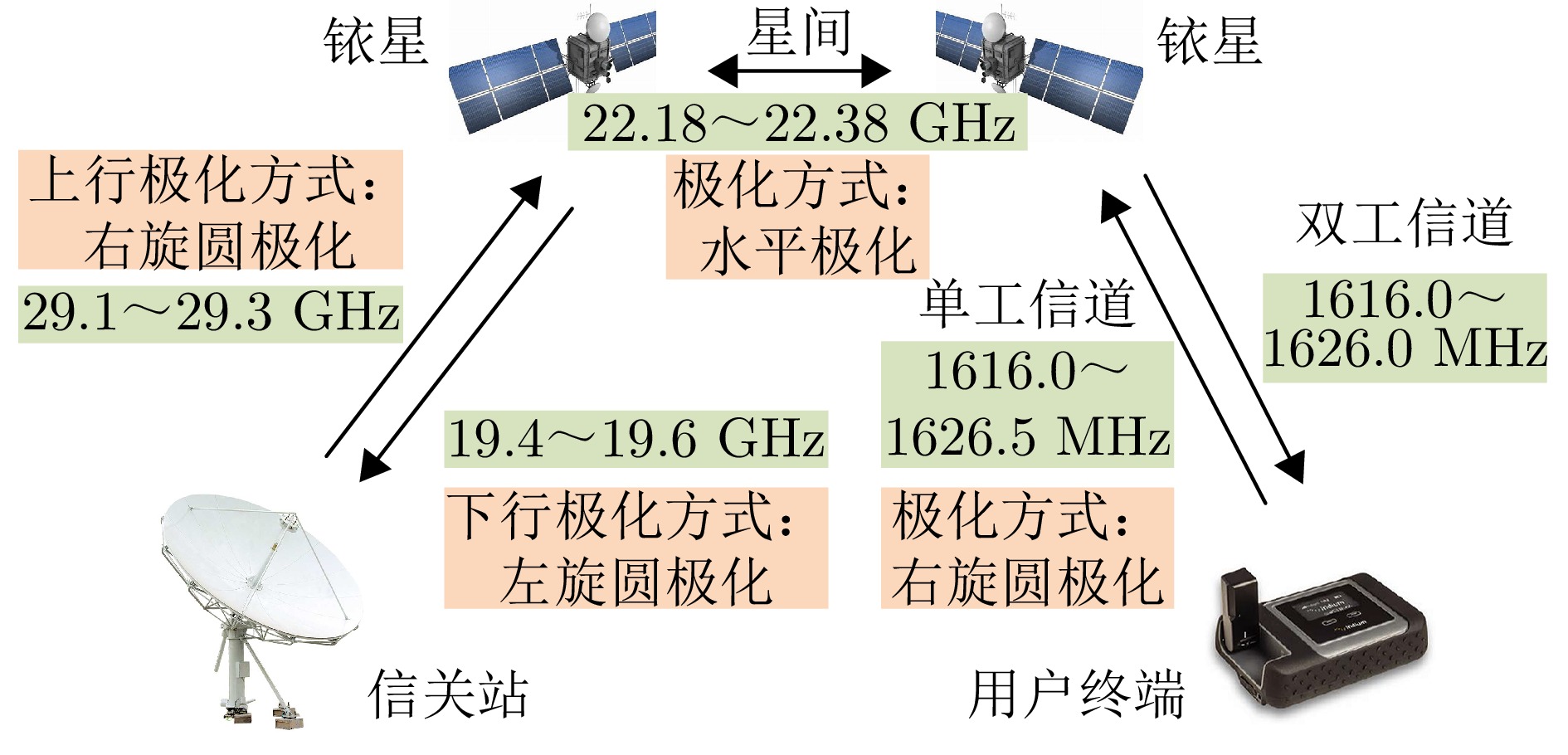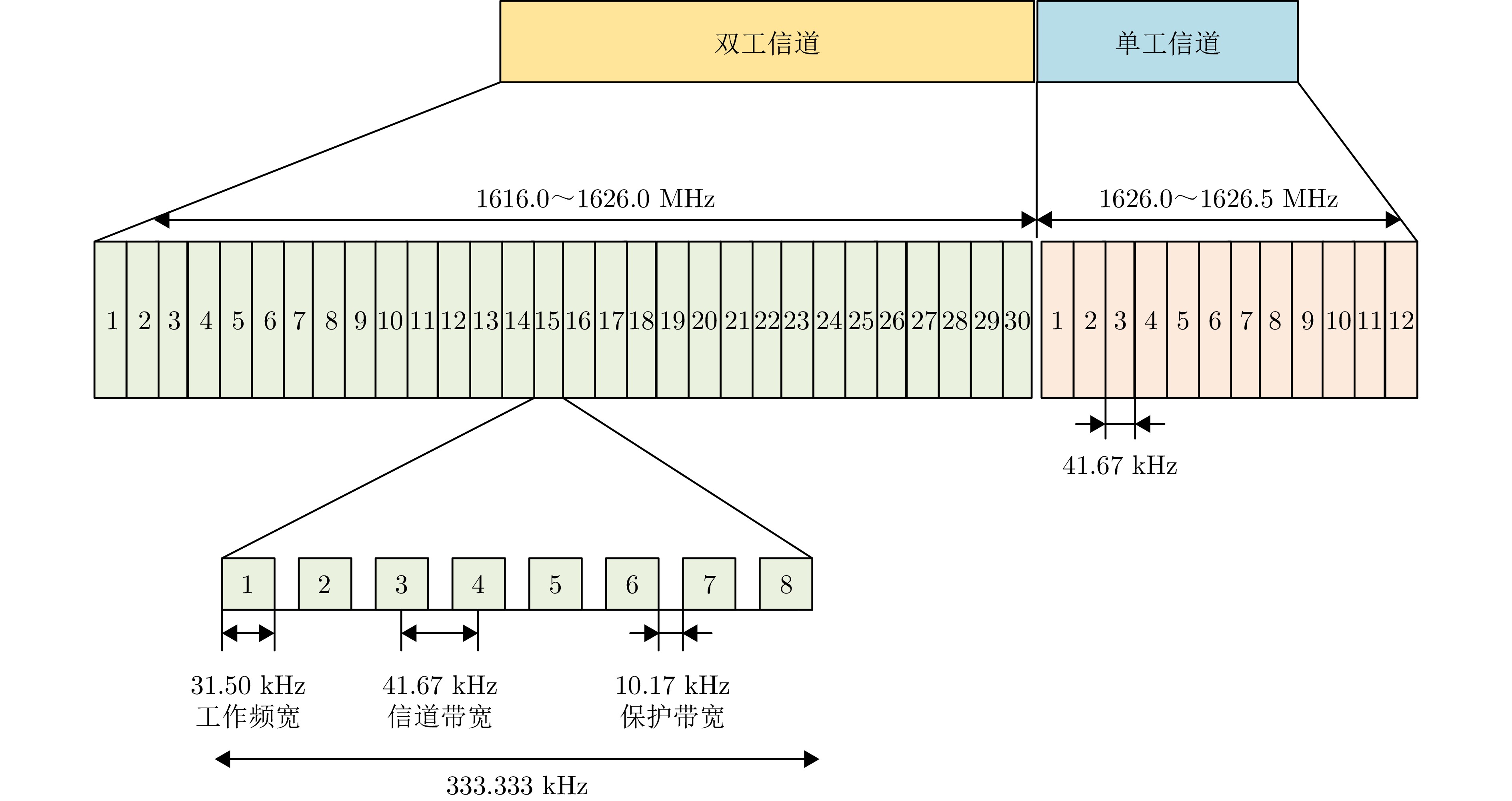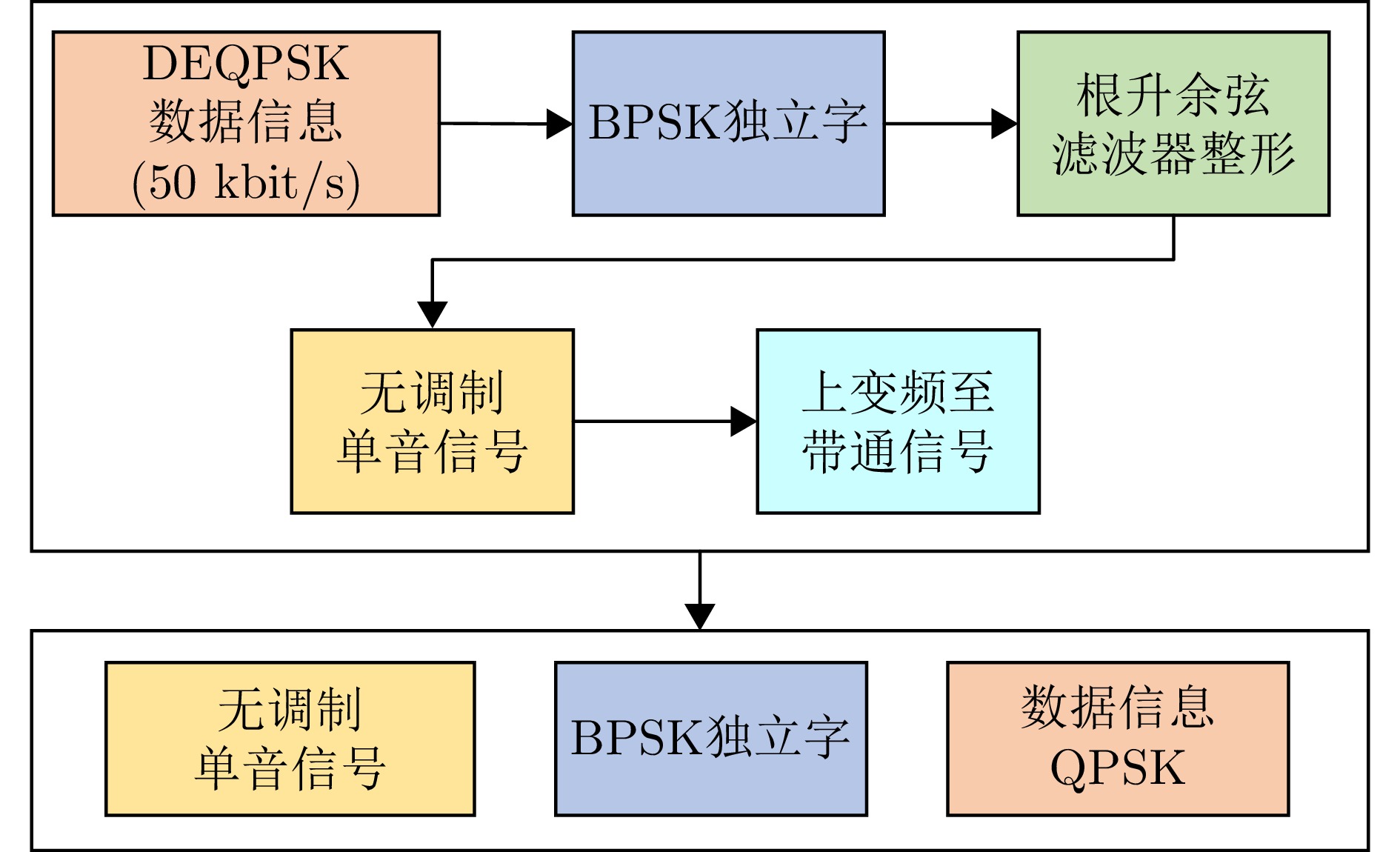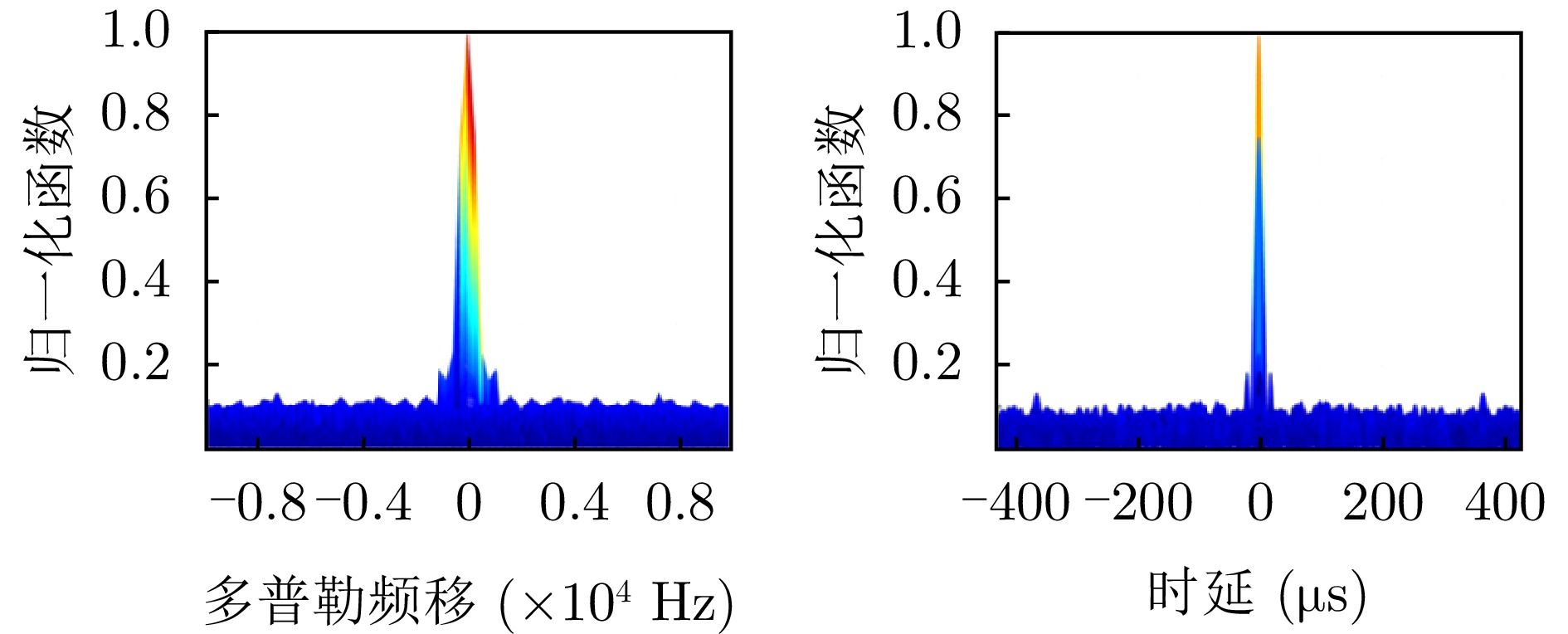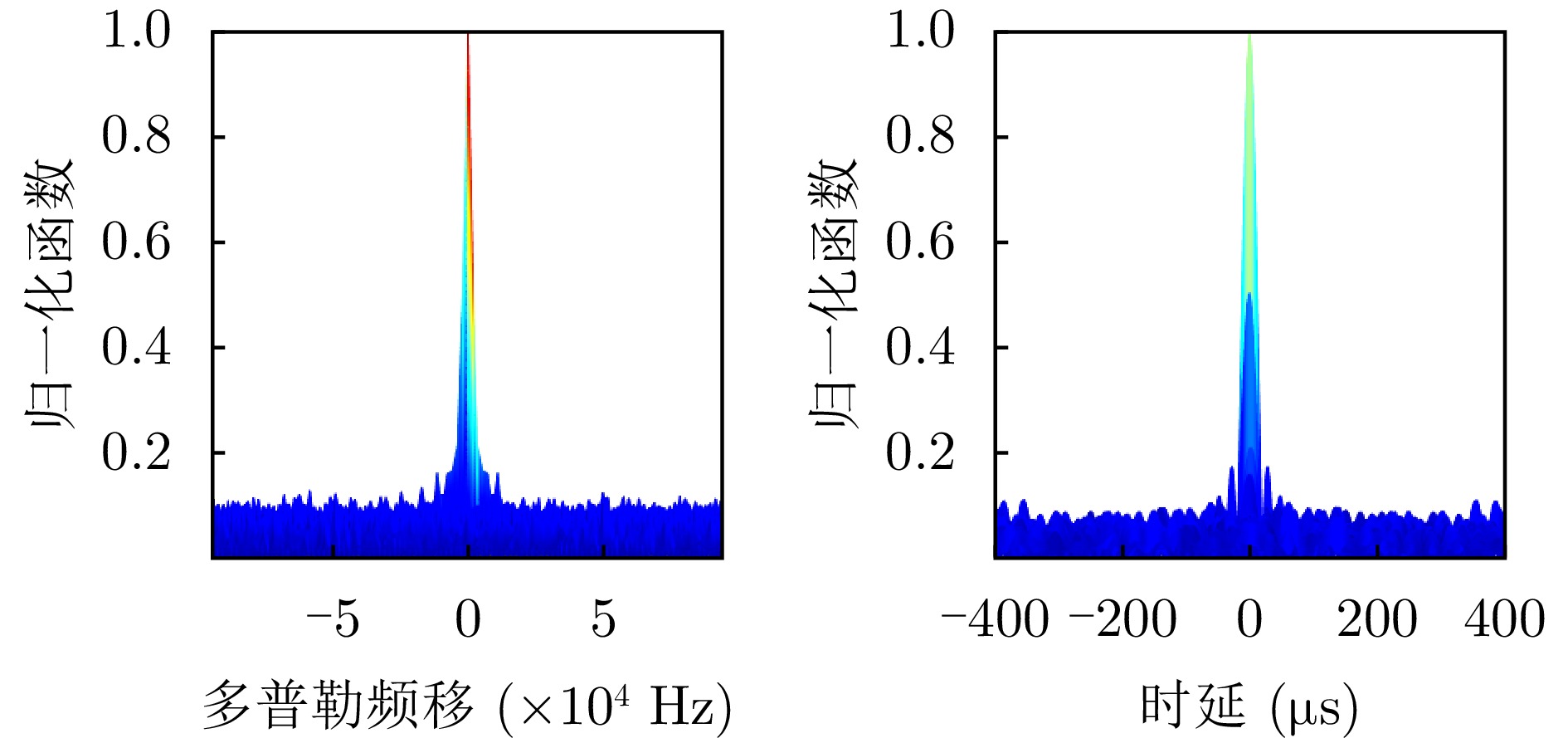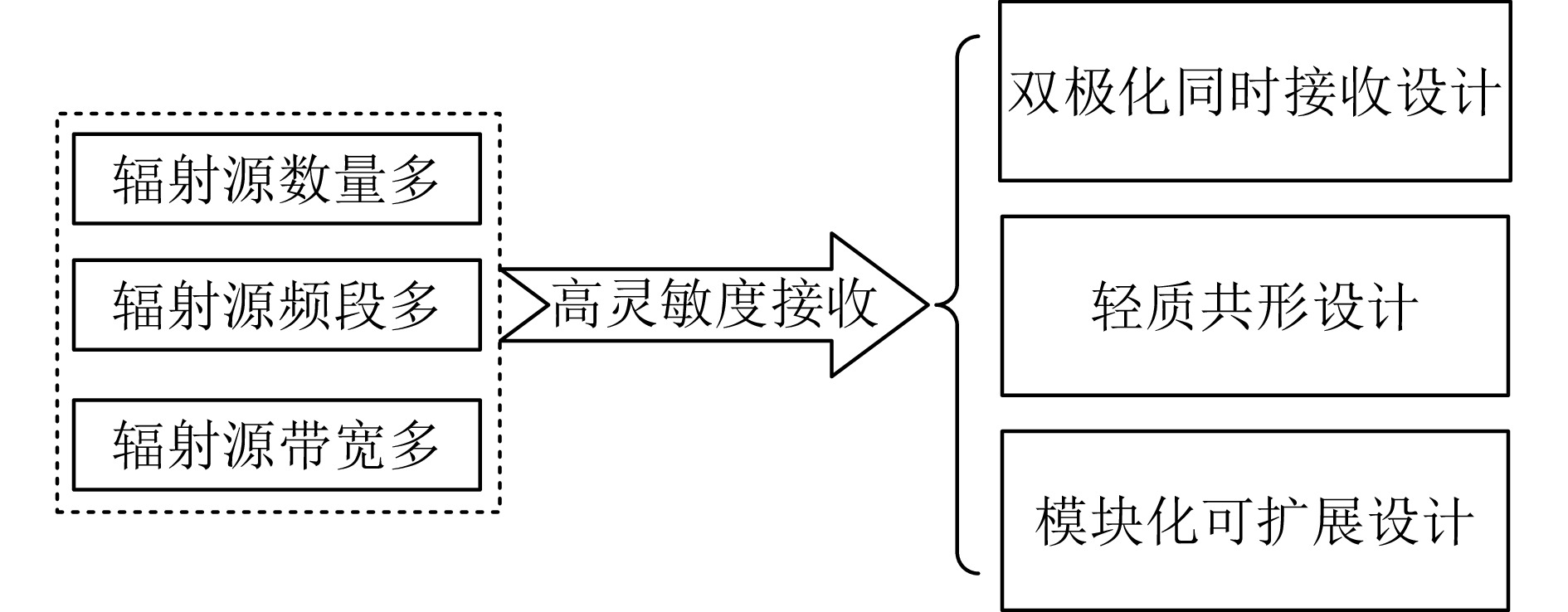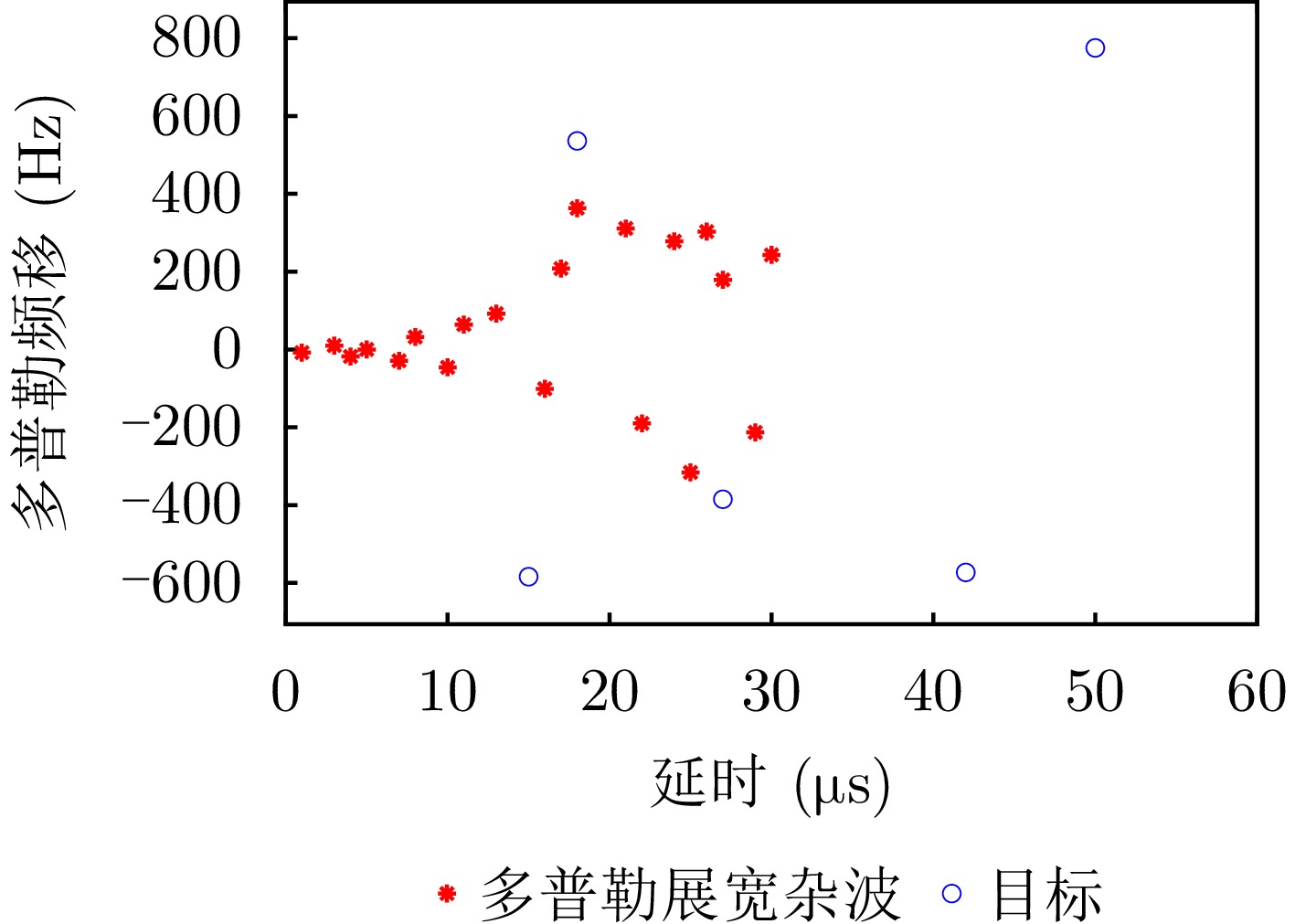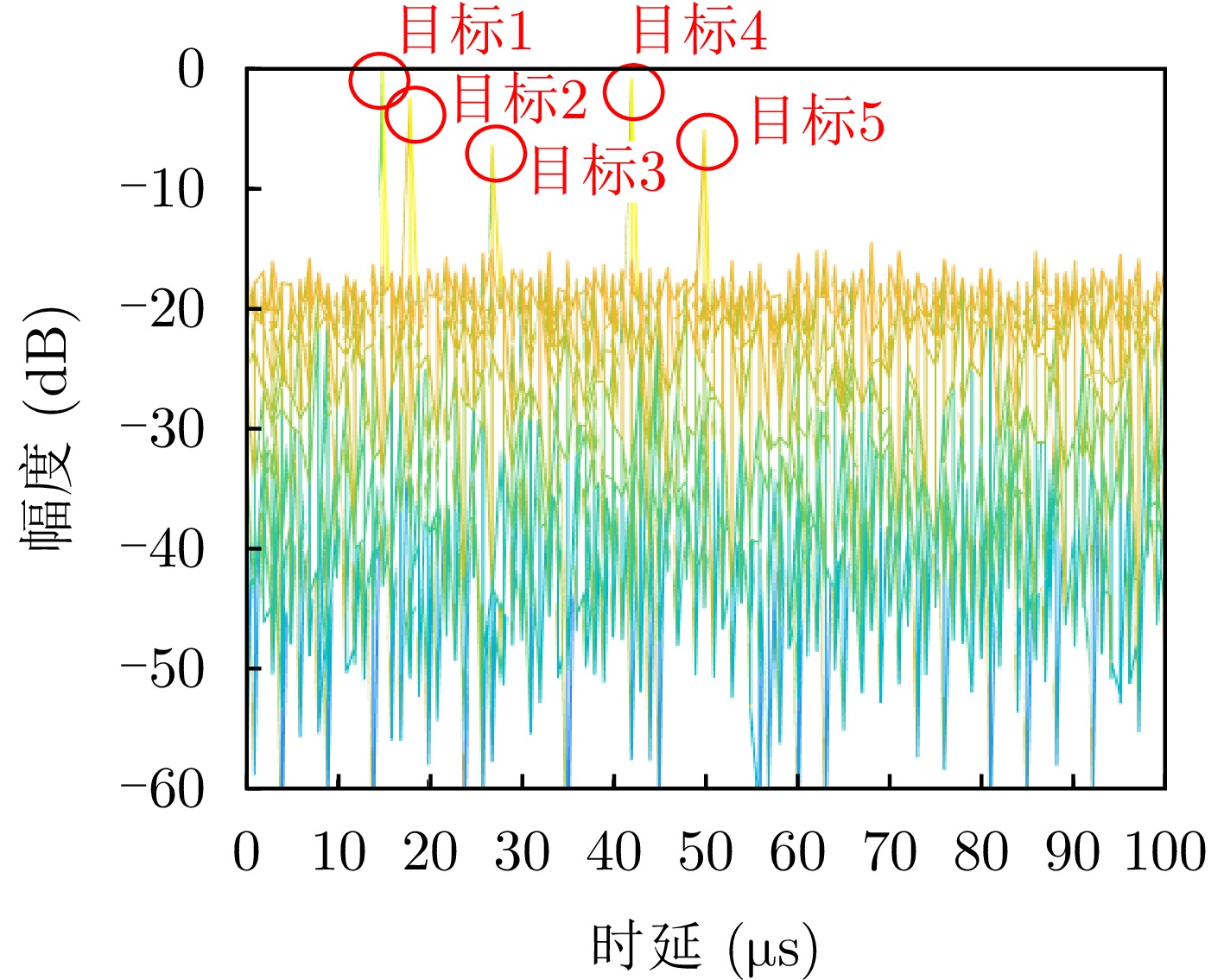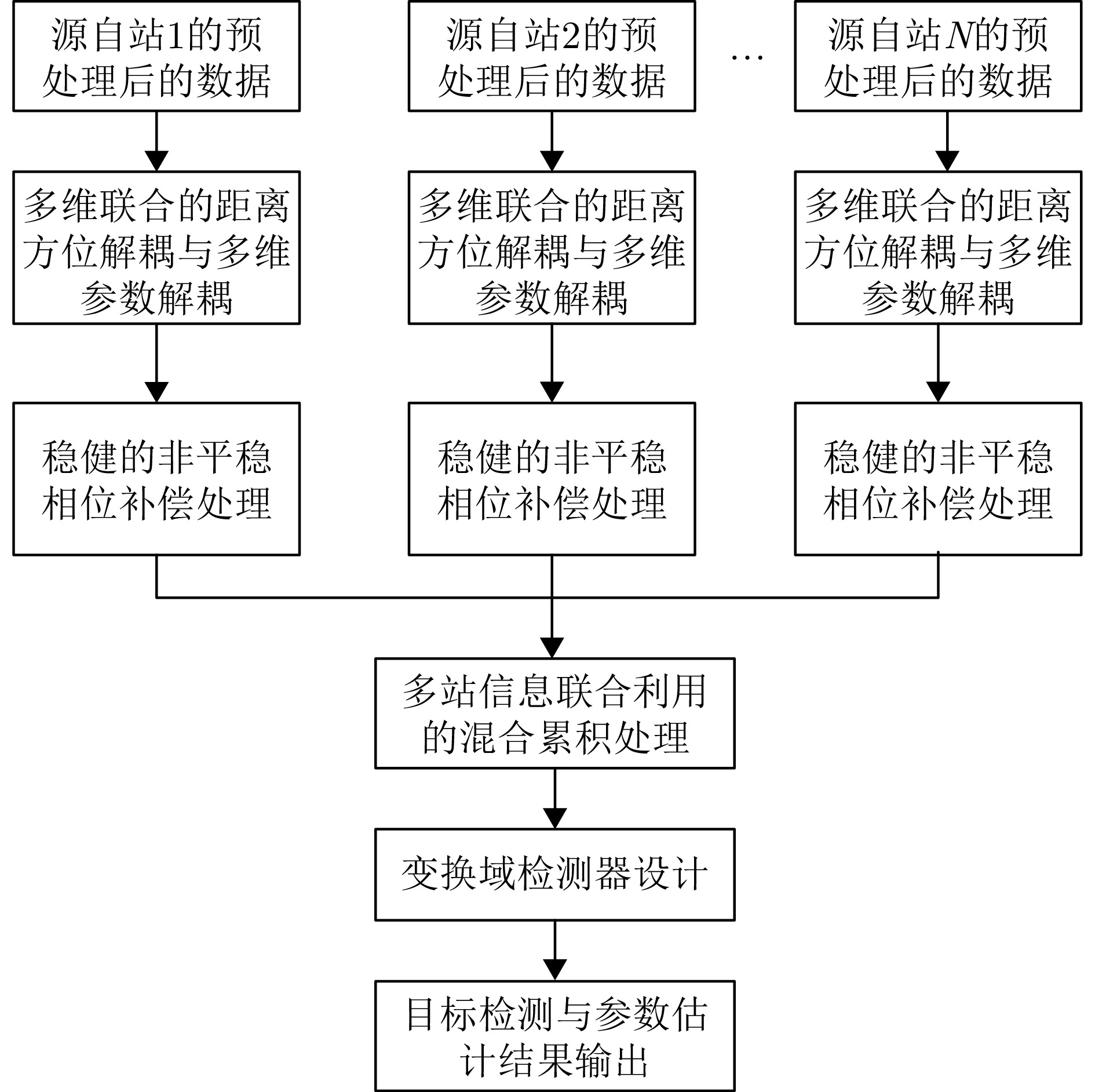| [1] |
KUSCHEL H. Approaching 80 years of passive radar[C]. 2013 International Conference on Radar, Adelaide, Australia, 2013: 213–217. doi: 10.1109/RADAR.2013.6651987. |
| [2] |
SONG Jie, HE You, CAI Fuqing, et al. Overview of passive radar technology based on non-cooperative radar illuminator[J]. Systems Engineering and Electronics, 2009, 31(9): 2151–2156, 2180. doi: 10.3321/j.issn:1001-506X.2009.09.028. |
| [3] |
郑恒, 王俊, 江胜利, 等. 外辐射源雷达[M]. 北京: 国防工业出版社, 2017: 1–10.
ZHENG Heng, WANG Jun, JIANG Shengli, et al. Passive Bistatic Radar[M]. Beijing, China: National Defense Industry Press, 2017: 1–10.
|
| [4] |
万显荣, 易建新, 占伟杰, 等. 基于多照射源的被动雷达研究进展与发展趋势[J]. 雷达学报, 2020, 9(6): 939–958. doi: 10.12000/JR20143. WAN Xianrong, YI Jianxin, ZHAN Weijie, et al. Research progress and development trend of the multi-illuminator-based passive radar[J]. Journal of Radars, 2020, 9(6): 939–958. doi: 10.12000/JR20143. |
| [5] |
WILLIS N J and GRIFFITHS H D. Advances in bistatic radar (Willis, NJ and Griffiths, HD, Eds.; 2007) [Book Review][J]. IEEE Aerospace and Electronic Systems Magazine, 2008, 23(7): 46–46. doi: 10.1109/MAES.2008.4579292. |
| [6] |
GRIFFITHS H and WILLIS N. Klein Heidelberg-the first modern bistatic radar system[J]. IEEE Transactions on Aerospace and Electronic Systems, 2010, 46(4): 1571–1588. doi: 10.1109/TAES.2010.5595580. |
| [7] |
GRIFFITHS H D and LONG N R W. Television-based bistatic radar[J]. IEE Proceedings F (Communications, Radar and Signal Processing), 1986, 133(7): 649–657. doi: 10.1049/ip-f-1.1986.0104. |
| [8] |
王小谟, 吴曼青, 王政. 未来战争中的“沉默哨兵”——外辐射源目标探测与跟踪雷达[J]. 现代军事, 2000(10): 10–12.
WANG Xiaomo, WU Manqing, and WANG Zhen. ‘Silence Sentinel’ in future wars—external radiation source target detection and tracking radar[J]. Modern Military, 2000(10): 10–12.
|
| [9] |
HOWLAND P E, MAKSIMIUK D, and REITSMA G. FM radio based bistatic radar[J]. IEE Proceedings-Radar, Sonar and Navigation, 2005, 152(3): 107–115. doi: 10.1049/ip-rsn:20045077. |
| [10] |
EDRICH M, SCHROEDER A, and MEYER F. Design and performance evaluation of a mature FM/DAB/DVB-T multi-illuminator passive radar system[J]. IET Radar, Sonar & Navigation, 2014, 8(2): 114–122. doi: 10.1049/iet-rsn.2013.0162. |
| [11] |
O’HAGAN D W, KUSCHEL H, UMMENHOFER M, et al. A multi-frequency hybrid passive radar concept for medium range air surveillance[J]. IEEE Aerospace and Electronic Systems Magazine, 2012, 27(10): 6–15. doi: 10.1109/MAES.2012.6373907. |
| [12] |
BIČÍK P. Passive radar: Here comes the new generation VERA-NG[C]. The 11-th International Radar Symposium, Vilnius, Lithuania, 2010: 1–4.
|
| [13] |
贾玉贵. 现代对空情报雷达[M]. 北京: 国防工业出版社, 2004: 169.
JIA Yugui. Modern Air Surveillance Radar[M]. Beijing, China: National Defense Industry Press, 2004: 169.
|
| [14] |
WU Yihu. Target detection and location technology in external illuminator based passive radar[D]. [Master dissertation], Xidian University, 2010. doi: 10.7666/d.Y1706760. |
| [15] |
|
| [16] |
郑雨晴, 艾小锋, 王满喜, 等. 以全球导航卫星系统为辐射源的前向散射雷达发展综述[J]. 电子与信息学报, 2024, 46(8): 3073–3093. doi: 10.11999/JEIT231255. ZHENG Yuqing, AI Xiaofeng, WANG Manxi, et al. Global navigation satellite system forward scatter radar: A review[J]. Journal of Electronics & Information Technology, 2024, 46(8): 3073–3093. doi: 10.11999/JEIT231255. |
| [17] |
LI Zhongyu, HUANG Chuan, WU Junjie, et al. Overview of maritime target detection techniques using GNSS-based passive radar[J]. Radar Science and Technology, 2020, 18(4): 404–416. doi: 10.3969/j.issn.1672-2337.2020.04.009. |
| [18] |
HUANG Chuan, LI Zhongyu, WU Junjie, et al. A long-time integration method for GNSS-based passive radar detection of marine target with multi-stage motions[C]. IGARSS 2020-2020 IEEE International Geoscience and Remote Sensing Symposium, Waikoloa, USA, 2020: 2815–2818. doi: 10.1109/IGARSS39084.2020.9324042. |
| [19] |
CHEN Jiangning. Research on dim target detection technology based on external transmitter of geostationary earth orbit satellite[D]. [Master dissertation], University of Electronic Science and Technology of China, 2021. doi: 10.27005/d.cnki.gdzku.2021.001367. |
| [20] |
LI Tang, WANG Feng, YANG Xinyu, et al. Development and status of air target detection from GNSS-based passive radar[J]. Radio Engineering, 2023, 53(7): 1639–1651. doi: 10.3969/j.issn.1003-3106.2023.07.018. |
| [21] |
LYU Xiaoyong, STOVE A, GASHINOVA M, et al. Ambiguity function of Inmarsat BGAN signal for radar application[J]. Electronics Letters, 2016, 52(18): 1557–1559. doi: 10.1049/el.2016.1400. |
| [22] |
FOSSA C E, RAINES R A, GUNSCH G H, et al. An overview of the IRIDIUM (R) Low Earth Orbit (LEO) satellite system[C]. IEEE 1998 National Aerospace and Electronics Conference. NAECON 1998. Celebrating 50 Years (Cat. No.98CH36185), Dayton, USA, 1998: 152–159. doi: 10.1109/NAECON.1998.710110. |
| [23] |
LIANG Jian. Investigation on Iridium STL positioning method[D]. [Master dissertation], Huazhong University of Science & Technology, 2019. doi: 10.27157/d.cnki.ghzku.2019.002798. |
| [24] |
QIN Honglei and ZHANG Yu. Positioning technology based on Starlink signal of opportunity[J]. Journal of Navigation and Positioning, 2023, 11(1): 67–73. doi: 10.3969/j.issn.2095-4999.2023.01.010. |
| [25] |
QIN Honglei, WU Ning, and ZHAO Chao. Differential positioning with doppler measurements from Iridium satellite signals of opportunity based on lines of sight correction[J]. Journal of Beijing University of Aeronautics and Astronautics, 2024, 50(3): 748–756. doi: 10.13700/j.bh.1001-5965.2022.0378. |
| [26] |
CUI Zhiying, YUE Fuzhan, TIAN Run, et al. Research on positioning technology based on Iridium burst signal[J]. GNSS World of China, 2021, 46(2): 77–85. doi: 10.12265/j.gnss.2020121503. |
| [27] |
GOMEZ-DEL-HOYO P, GRONOWSKI K, and SAMCZYNSKI P. The STARLINK-based passive radar: Preliminary study and first illuminator signal measurements[C]. 2022 23rd International Radar Symposium (IRS), Gdansk, Poland, 2022: 350–355. doi: 10.23919/IRS54158.2022.9905046. |
| [28] |
KHALIFE J, NEINAVAIE M, and KASSAS Z M. The first carrier phase tracking and positioning results with Starlink LEO satellite signals[J]. IEEE Transactions on Aerospace and Electronic Systems, 2022, 58(2): 1487–1491. doi: 10.1109/TAES.2021.3113880. |
| [29] |
KOCH V and WESTPHAL R. New approach to a multistatic passive radar sensor for air/space defense[J]. IEEE Aerospace and Electronic Systems Magazine, 1995, 10(11): 24–32. doi: 10.1109/62.473409. |
| [30] |
MCINTOSH J C. Passive three dimensional track of non-cooperative targets through opportunistic use of global positioning system (GPS) and GLONASS signals[EB/OL]. https://www.freepatentsonline.com/6232922.html, 2001.
|
| [31] |
MOJARRABI B, HOMER J, KUBIK K, et al. Power budget study for passive target detection and imaging using secondary applications of GPS signals in bistatic radar systems[C]. IEEE International Geoscience and Remote Sensing Symposium, Toronto, Canada, 2002: 449–451. doi: 10.1109/IGARSS.2002.1025069. |
| [32] |
BEHAR V and KABAKCHIEV C. Detectability of air targets using bistatic radar based on GPS L5 signals[C]. 2011 12th International Radar Symposium (IRS), Leipzig, Germany, 2011: 212–217.
|
| [33] |
MA Hui, ANTONIOU M, PASTINA D, et al. Maritime moving target indication using passive GNSS-based bistatic radar[J]. IEEE Transactions on Aerospace and Electronic Systems, 2018, 54(1): 115–130. doi: 10.1109/TAES.2017.2739900. |
| [34] |
PASTINA D, SANTI F, PIERALICE F, et al. Maritime moving target long time integration for GNSS-based passive bistatic radar[J]. IEEE Transactions on Aerospace and Electronic Systems, 2018, 54(6): 3060–3083. doi: 10.1109/TAES.2018.2840298. |
| [35] |
VEREMYEV V I, VOROBEV E N, and KOKORINA Y V. Feasibility study of air target detection by passive radar using satellite-based transmitters[C]. 2019 IEEE Conference of Russian Young Researchers in Electrical and Electronic Engineering (EIConRus), Saint Petersburg and Moscow, Russia, 2019: 154–157. doi: 10.1109/EIConRus.2019.8656630. |
| [36] |
NASSO I and SANTI F. A centralized approach for ship target detection and localization with multi-transmitters GNSS-based passive radar[C]. International Conference on Radar Systems (RADAR 2022), Edinburgh, UK, 2022: 202–207. doi: 10.1049/icp.2022.2316. |
| [37] |
NASSO I and SANTI F. Maritime moving target detection and localisation technique for Global Navigation Satellite Signals-based passive multistatic radar[J]. IET Radar, Sonar & Navigation, 2024, 18(1): 93–106. doi: 10.1049/rsn2.12438. |
| [38] |
DAI Jianhua and YIN Chengyou. Research on passive reconnaissance and positioning system using GPS interstellar irradiation source[J]. Aerospace Electronic Warfare, 2001(4): 8–12. doi: 10.3969/j.issn.1673-2421.2001.04.003. |
| [39] |
YUAN Weiming, LIU Lidong, WU Shunjun, et al. An novel signal processing algorithm for SBR based on GPS illumination[J]. Chinese Journal of Radio Science, 2004, 19(2): 219–222. doi: 10.3969/j.issn.1005-0388.2004.02.019. |
| [40] |
LIU Lidong, YUAN Weiming, WU Shunjun, et al. Bistatic radar system based on GPS illumination[J]. Chinese Journal of Radio Science, 2004, 19(1): 109–113. doi: 10.3969/j.issn.1005-0388.2004.01.024. |
| [41] |
HE X, CHERNIAKOV M, and ZENG T. Signal detectability in SS-BSAR with GNSS non-cooperative transmitter[J]. IEE Proceedings-Radar, Sonar and Navigation, 2005, 152(3): 124–132. doi: 10.1049/ip-rsn:20045042. |
| [42] |
YANG Dongkai, LU Yong, and ZHANG Bo. Space vehicle detection and positioning based on reflected signal of navigation satellite[J]. Acta Aeronautica et Astronautica Sinica, 2009, 30(1): 143–147. doi: 10.3321/j.issn:1000-6893.2009.01.023. |
| [43] |
FAN Meimei, LIAO Dongping, and DING Xiaofeng. Feasibility research of passive radar based on Beidou navigation and position system[J]. Journal of Signal Processing, 2010, 26(4): 631–636. doi: 10.3969/j.issn.1003-0530.2010.04.028. |
| [44] |
蒋铁珍, 肖文书, 李大圣, 等. 基于星载机会源的空间目标外辐射源雷达探测技术可行性研究[J]. 雷达学报, 2014, 3(6): 711–719. doi: 10.12000/JR14080. JIANG Tiezhen, XIAO Wenshu, LI Dasheng, et al. Feasibility study on passive-radar detection of space targets using spaceborne illuminators of opportunity[J]. Journal of Radars, 2014, 3(6): 711–719. doi: 10.12000/JR14080. |
| [45] |
HE Zheng, MENG Jidong, and SHANG She. New bistatic radar system based on GPS illumination[J]. Electronic Design Engineering, 2015, 23(21): 32–34. doi: 10.3969/j.issn.1674-6236.2015.21.010. |
| [46] |
LI Yuting. Signal detection based on multiple GPS satellites information fusion[D]. [Master dissertation], Xidian University, 2017. doi: 10.7666/d.D01385181. |
| [47] |
GUO Dandan. Target detection method in passive bistatic radar based on Beidou II satellite signals[D]. [Master dissertation], Xidian University, 2019. doi: 10.27389/d.cnki.gxadu.2019.000758. |
| [48] |
HE Zhenyu, CHEN Wu, and YANG Yang. GPS-based space-surface passive bistatic radar technique for maritime moving target detection[J]. Acta Geodaetica et Cartographica Sinica, 2020, 49(12): 1523–1534. doi: 10.11947/j.AGCS.2020.20190487. |
| [49] |
HUANG Chuan, LI Zhongyu, WU Junjie, et al. Multistatic Beidou-based passive radar for maritime moving target detection and localization[C]. IGARSS 2019-2019 IEEE International Geoscience and Remote Sensing Symposium, Yokohama, Japan, 2019: 2175–2177. doi: 10.1109/IGARSS.2019.8900548. |
| [50] |
LI Zhongyu, HUANG Chuan, WU Junjie, et al. Investigation and first experiment of BeiDou-based passive radar vessel target imaging[C]. 2022 3rd URSI Atlantic and Asia Pacific Radio Science Meeting (AT-AP-RASC), Gran Canaria, Spain, 2022: 1–4. doi: 10.23919/AT-AP-RASC54737.2022.9814205. |
| [51] |
LI Zhongyu, HUANG Chuan, SUN Zhichao, et al. BeiDou-based passive multistatic radar maritime moving target detection technique via space-time hybrid integration processing[J]. IEEE Transactions on Geoscience and Remote Sensing, 2022, 60: 5802313. doi: 10.1109/TGRS.2021.3128650. |
| [52] |
HE Zhenyu, YANG Yang, CHEN Wu, et al. Moving target imaging using GNSS-based passive bistatic synthetic aperture radar[J]. Remote Sensing, 2020, 12(20): 3356. doi: 10.3390/rs12203356. |
| [53] |
HE Zhenyu, CHEN Wu, YANG Yang, et al. Maritime ship target imaging with GNSS-based passive multistatic radar[J]. IEEE Transactions on Geoscience and Remote Sensing, 2023, 61: 5800918. doi: 10.1109/TGRS.2023.3270182. |
| [54] |
ZHENG Hui, CHENG Shuiying, and ZHANG Maoyi. Reference signal reconstruction for GPS-based passive radar based on software radio platform[C]. 2023 IEEE 6th Information Technology, Networking, Electronic and Automation Control Conference (ITNEC), Chongqing, China, 2023: 732–736. doi: 10.1109/ITNEC56291.2023.10082494. |
| [55] |
TANG Tao, WANG Pengbo, ZENG Hongcheng, et al. An efficient coarse-to-fine Doppler parameter search method for moving target detection using GNSS-based passive bistatic radar[J]. IEEE Geoscience and Remote Sensing Letters, 2024, 21: 3509105. doi: 10.1109/LGRS.2024.3450209. |
| [56] |
杨东凯, 谭传瑞, 王峰, 等. 基于高度角随机模型的GNSS外辐射源雷达定位算法[J]. 电子与信息学报, 2024, 46(4): 1373–1381. doi: 10.11999/JEIT230462. YANG Dongkai, TAN Chuanrui, WANG Feng, et al. GNSS elevation-dependent stochastic localization algorithm for gnss-based passive radar[J]. Journal of Electronics and Information Technology, 2024, 46(4): 1373–1381. doi: 10.11999/JEIT230462. |
| [57] |
GAO Wenning, YUE Fuzhan, XIA Zhenghuan, et al. Multistatic collaborative imaging for shipborne GNSS-S radar: Method and experimental verification[J]. IEEE Geoscience and Remote Sensing Letters, 2024, 21: 4009805. doi: 10.1109/LGRS.2024.3398577. |
| [58] |
GRIFFITHS H D, GARNETT A J, BAKER C J, et al. Bistatic radar using satellite-borne illuminators of opportunity[C]. 92 International Conference on Radar, Brighton, UK, 1992: 276–279.
|
| [59] |
MARQUES P, FERREIRA A, FORTES F, et al. A pedagogical passive RADAR using DVB-S signals[C]. 2011 3rd International Asia-Pacific Conference on Synthetic Aperture Radar (APSAR), Seoul, Korea (South), 2011: 1–4.
|
| [60] |
PISCIOTTANO I, PASTINA D, and CRISTALLINI D. DVB-S based passive radar imaging of ship targets[C]. The 20th International Radar Symposium (IRS), Ulm, Germany, 2019: 1–7. doi: 10.23919/IRS.2019.8768097. |
| [61] |
PISCIOTTANO I, SANTI F, PASTINA D, et al. DVB-S based passive polarimetric ISAR—Methods and experimental validation[J]. IEEE Sensors Journal, 2021, 21(5): 6056–6070. doi: 10.1109/JSEN.2020.3037091. |
| [62] |
MARTELLI T, CABRERA O, COLONE F, et al. Exploitation of long coherent integration times to improve drone detection in DVB-S based passive radar[C]. 2020 IEEE Radar Conference (RadarConf20), Florence, Italy, 2020: 1–6. doi: 10.1109/RadarConf2043947.2020.9266624. |
| [63] |
CABRERA O, BONGIOANNI C, COLONE F, et al. Non-coherent DVB-S passive radar demonstrator[C]. 2020 21st International Radar Symposium (IRS), Warsaw, Poland, 2020: 228–231. doi: 10.23919/IRS48640.2020.9253805. |
| [64] |
GENTILE L, CAPRIA A, SAVERINO A L, et al. DVB-S2 passive bistatic radar for resident space object detection: Preliminary results[C]. 2020 IEEE International Radar Conference (RADAR), Washington, USA, 2020: 607–611. doi: 10.1109/RADAR42522.2020.9114746. |
| [65] |
GRONOWSKI K, ALMODOVAR-HERNANDEZ A, GUTIERREZ-SERRANO S, et al. Preliminary results of detection utilizing DVB-S2 based polarimetric passive radar[C]. 2024 International Radar Symposium (IRS), Wroclaw, Poland, 2024: 414–419.
|
| [66] |
JIN Wei, LÜ Xiaode, and XIANG Maosheng. Ambiguity function and resolution characteristic analysis of DVB-S signal for passive radar[J]. Journal of Radars, 2012, 1(4): 380–386. doi: 10.3724/SP.J.1300.2012.20077. |
| [67] |
SUN Zeyue, WANG Tianyun, JIANG Tao, et al. Analysis of the properties of DVB-S signal for passive radar application[C]. 2013 International Conference on Wireless Communications and Signal Processing, Hangzhou, China, 2013: 1–5. doi: 10.1109/WCSP.2013.6677172. |
| [68] |
孙泽月. 基于DVB-S信号特性分析的无源检测技术研究[D]. [硕士论文], 中国科学技术大学, 2014.
SUN Zeyue. Research on passive detection based on the analysis of the properties of DVB-S signal[D]. [Master dissertation], University of Science and Technology of China, 2014.
|
| [69] |
冯斌. DVB-S信号的无源雷达接收处理技术研究[D]. [硕士论文], 中国科学技术大学, 2014.
FENG Bin. Research on DVB-S signal processing of passive radar system[D]. [Master dissertation], University of Science and Technology of China, 2014.
|
| [70] |
刘明骞, 高修会, 李兵兵. 一种多个不同体制卫星下微弱回波信号联合检测方法[P]. 中国, 201610344683.1, 2016.
LIU Mingqian, GAO Xiuhui, and LI Bingbing. Joint detection method for weak echo signals under satellites of multiple different systems[P]. CN, 201610344683.1, 2016.
|
| [71] |
李凌. 基于DVB-S信号的无源雷达检测方法研究[D]. [硕士论文], 浙江大学, 2019.
LI Ling. A study on detection techniques for passive radar based on DVB-S signal[D]. [Master dissertation], Zhejiang University, 2019.
|
| [72] |
LI Junjie, WEI Junkang, CAO Zhihui, et al. A DVB-S-based multichannel passive radar system for vehicle detection[J]. IEEE Access, 2021, 9: 2900–2912. doi: 10.1109/ACCESS.2020.3047525. |
| [73] |
谢进文. 基于外辐射源的高速运动目标探测技术[D]. [硕士论文], 电子科技大学, 2018.
XIE Jinwen. High velocity targets detection technology based on opportunity illumination[D]. [Master dissertation], University of Electronic Science and Technology of China, 2018.
|
| [74] |
TONG Yun, WAN Xianrong, ZHOU Xin, et al. Experimental research of ship target detection with DVB-S based passive radar[C]. Chinese National Symposium on Radio Propagation (CNSRP2023), Qingdao, China, 2023: 4. doi: 10.26914/c.cnkihy.2023.050938. |
| [75] |
DANIEL L, HRISTOV S, LYU Xiaoyong, et al. Design and validation of a passive radar concept for ship detection using communication satellite signals[J]. IEEE Transactions on Aerospace and Electronic Systems, 2017, 53(6): 3115–3134. doi: 10.1109/TAES.2017.2728978. |
| [76] |
STOVE A G, GASHINOVA M S, HRISTOV S, et al. Passive maritime surveillance using satellite communication signals[J]. IEEE Transactions on Aerospace and Electronic Systems, 2017, 53(6): 2987–2997. doi: 10.1109/TAES.2017.2722598. |
| [77] |
STOVE A G, GASHINOVA M S, HRISTOV S, et al. Passive maritime surveillance using satellite communication signals[J]. IEEE Transactions on Aerospace and Electronic Systems, 2017, 53(6): 2987–2997. doi: 10.1109/TAES.2017.2722598. |
| [78] |
DANIEL L, HRISTOV S, LYU Xiaoyong, et al. Design and validation of a passive radar concept for ship detection using communication satellite signals[J]. IEEE Transactions on Aerospace and Electronic Systems, 2017, 53(6): 3115–3134. doi: 10.1109/TAES.2017.2728978. |
| [79] |
CHERNIAKOV M, NEZLIN D, and KUBIK K. Air target detection via bistatic radar based on LEOs communication signals[J]. IEE Proceedings-Radar, Sonar and Navigation, 2002, 149(1): 33–38. doi: 10.1049/ip-rsn:20020129. |
| [80] |
LYU Xiaoyong, STOVE A, GASHINOVA M, et al. Ambiguity function of Iridium signal for radar application[J]. Electronics Letters, 2016, 52(19): 1631–1633. doi: 10.1049/el.2016.1404. |
| [81] |
LYU Xiaoyong, HRISTOV S, GASHINOVA M, et al. Ambiguity function analysis of the Inmarsat I-4 and Iridium signals[C]. International Conference on Radar Systems, Belfast, UK, 2017: 1–4. doi: 10.1049/cp.2017.0510. |
| [82] |
SAYIN A, CHERNIAKOV M, and ANTONIOU M. Passive radar using Starlink transmissions: A theoretical study[C]. 2019 20th International Radar Symposium (IRS), Ulm, Germany, 2019: 1–7. doi: 10.23919/IRS.2019.8768105. |
| [83] |
GOMEZ-DEL-HOYO P, SAMCZYNSKI P, and MICHALAK F. Analysis of Starlink Users’ downlink for passive radar applications: Signal characteristics and ambiguity function performance[C]. 2023 IEEE Radar Conference (RadarConf23), San Antonia, US, 2023: 1–6. doi: 10.1109/RadarConf2351548.2023.10149600. |
| [84] |
BLÁZQUEZ-GARCÍA R, UMMENHOFER M, CRISTALLINI D, et al. Passive radar architecture based on broadband LEO communication satellite constellations[C]. 2022 IEEE Radar Conference (RadarConf22), New York City, USA, 2022: 1–6. doi: 10.1109/RadarConf2248738.2022.9764342. |
| [85] |
BLÁZQUEZ-GARCÍA R, CRISTALLINI D, UMMENHOFER M, et al. Experimental comparison of Starlink and OneWeb signals for passive radar[C]. 2023 IEEE Radar Conference (RadarConf23), San Antonio, USA, 2023: 1–6. doi: 10.1109/RadarConf2351548.2023.10149580. |
| [86] |
BLÁZQUEZ-GARCÍA R, CRISTALLINI D, SEIDEL V, et al. Experimental acquisition of Starlink satellite transmissions for passive radar applications[C]. International Conference on Radar Systems, Edinburgh, UK, 2022: 130–135. doi: 10.1049/icp.2022.2304. |
| [87] |
ZHANG Maoyi, CHENG Shuiying, and ZHENG Hui. Feasibility of Starlink transmissions for passive airborne targets detection[C]. 2022 5th International Conference on Information Communication and Signal Processing (ICICSP), Shenzhen, China, 2022: 656–661. doi: 10.1109/ICICSP55539.2022.10050607. |
| [88] |
ZHU Hanqing, ZHOU Dajiang, LI Zhongyu, et al. Moving target detection method for passive radar using LEO communication satellite constellation[C]. IGARSS 2023-2023 IEEE International Geoscience and Remote Sensing Symposium, Pasadena, USA, 2023: 8090–8093. doi: 10.1109/IGARSS52108.2023.10283174. |
| [89] |
QIU Xingye, LI Aocheng, LI Zhongyu, et al. The low-earth-orbit communication satellites-based passive radar target detection via blind signal identification[C]. IGARSS 2024-2024 IEEE International Geoscience and Remote Sensing Symposium, Athens, Greece, 2024: 6685–6688. doi: 10.1109/IGARSS53475.2024.10642614. |
| [90] |
GOMEZ-DEL-HOYO P and SAMCZYNSKI P. Starlink-based passive radar for Earth’s surface imaging: First experimental results[J]. IEEE Journal of Selected Topics in Applied Earth Observations and Remote Sensing, 2024, 17: 13949–13965. doi: 10.1109/JSTARS.2024.3437179. |
| [91] |
ZHOU Xin, YI Jianxin, WAN Xianrong, et al. Methods and experiments for forward scattering detection of UAV targets based on opportunistic illumination from low-orbit satellites[J]. Journal of Signal Processing, 2024, 40(12): 2105–2115. doi: 10.12466/xhcl.2024.12.001. |
| [92] |
李江林. 铱星外辐射源雷达非均匀多普勒抽取杂波抑制技术研究[D]. [硕士论文], 重庆: 重庆大学, 2024.
LI Jianglin. Research on Doppler extraction clutter suppression technology based on iridium passive bistatic radar[D]. [Master dissertation], Chongqing: Chongqing University, 2024.
|
| [93] |
TIAN Run, CUI Zhiying, ZHANG Shuangna, et al. Overview of navigation augmentation technology based on LEO[J]. Navigation Positioning and Timing, 2021, 8(1): 66–81. doi: 10.19306/j.cnki.2095-8110.2021.01.007. |
| [94] |
MENG Yansong, BIAN Lang, WANG Ying, et al. Global navigation augmentation system based on Hongyan satellite constellation[J]. Space International, 2018(10): 20–27. doi: 10.3969/j.issn.1009-2366.2018.10.005. |
| [95] |
SONG Yichen, XU Xiaotao, and SONG Wenting. Overview of the development of satellite mobile communication systems at home and abroad[J]. Telecommunications Information, 2019(8): 37–41. doi: 10.3969/j.issn.1006-1339.2019.08.008. |
| [96] |
WANG Qing, ZHU Minjiong, ZHOU Jie, et al. Terminal-to-terminal calling for GEO broadband mobile satellite communication[J]. ZTE Communications, 2015, 13(2): 46–52. doi: 10.3969/j.issn.1673-5188.2015.02.009. |
| [97] |
PRESS L. A new Chinese broadband satellite constellation[EB/OL]. https://circleid.com/posts/20201002-a-new-chinese-broadband-satellite-constellation/, 2020.
|
| [98] |
《2021中国的航天》白皮书发布[EB/OL]. https://www.cnsa.gov.cn/n6758823/n6758844/n6760320/index.html, 2021.
China releases white paper titled “China’s space progrom: A 2021 perspective”[EB/OL]. https://www.cnsa.gov.cn/n6758823/n6758844/n6760320/index.html, 2021.
|
| [99] |
CRISTALLINI D, CARUSO M, FALCONE P, et al. Space-based passive radar enabled by the new generation of geostationary broadcast satellites[C]. 2010 IEEE Aerospace Conference, Big Sky, USA, 2010: 1–11. doi: 10.1109/AERO.2010.5446694. |
| [100] |
XIE Zhuocheng. STL signal system and performance research of iridium satellite[D]. [Master dissertation], Huazhong University of Science & Technology, 2019. doi: 10.27157/d.cnki.ghzku.2019.002799. |
| [101] |
|
| [102] |
QIN Honglei, TAN Zizhong, CONG Li, et al. Positioning technology based on IRIDIUM signals of opportunity[J]. Journal of Beijing University of Aeronautics and Astronautics, 2019, 45(9): 1691–1699. doi: 10.13700/j.bh.1001-5965.2018.0717. |
| [103] |
NEINAVAIE M and KASSAS Z M. Unveiling Starlink LEO satellite OFDM-Like signal structure enabling precise positioning[J]. IEEE Transactions on Aerospace and Electronic Systems, 2024, 60(2): 2486–2489. doi: 10.1109/TAES.2023.3265951. |
| [104] |
HUMPHREYS T E, IANNUCCI P A, KOMODROMOS Z M, et al. Signal structure of the Starlink Ku-band downlink[J]. IEEE Transactions on Aerospace and Electronic Systems, 2023, 59(5): 6016–6030. doi: 10.1109/TAES.2023.3268610. |
| [105] |
NEINAVAIE M and KASSAS Z M. Signal mode transition detection in Starlink LEO satellite downlink signals[C]. 2023 IEEE/ION Position, Location and Navigation Symposium (PLANS), Monterey, US, 2023: 360–364. doi: 10.1109/PLANS53410.2023.10139993. |
| [106] |
KOZHAYA S, KANJ H, and KASSAS Z M. Multi-constellation blind beacon estimation, Doppler tracking, and opportunistic positioning with OneWeb, Starlink, Iridium NEXT, and Orbcomm LEO satellites[C]. 2023 IEEE/ION Position, Location and Navigation Symposium (PLANS), Monterey, USA, 2023: 1184–1195. doi: 10.1109/PLANS53410.2023.10139969. |
| [107] |
极客网. T-Mobile美国测试卫星直连手机发送紧急警报, 覆盖通信盲区[EB/OL]. https://finance.sina.com.cn/stock/relnews/us/2024-09-14/doc-incpatau1803357.shtml, 2024.
Geeknet. T-Mobile in the United States tests direct satellite connection with mobile phones for sending emergency alerts, covering communication blind spots [EB/OL]. https://finance.sina.com.cn/stock/relnews/us/2024-09-14/doc-incpatau1803357.shtml, 2024.
|
| [108] |
YANG Jinpei, LIU Zhong, and ZHU Xiaohua. The performances analysis of GPS signals for passive radar[J]. Journal of Electronics & Information Technology, 2007, 29(5): 1083–1086. doi: 10.3724/SP.J.1146.2005.01981. |




 Submit Manuscript
Submit Manuscript Peer Review
Peer Review Editor Work
Editor Work

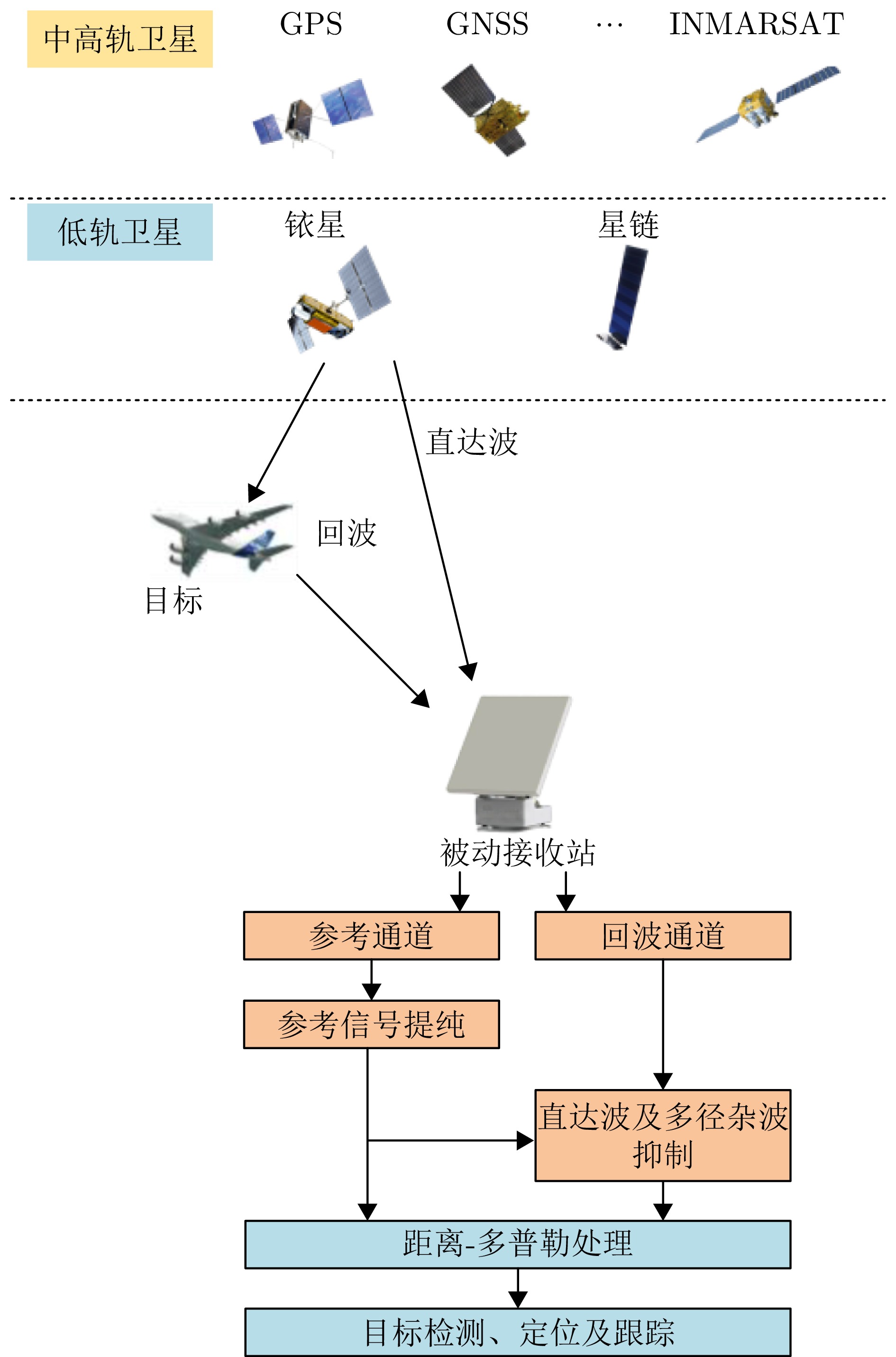



 DownLoad:
DownLoad:

